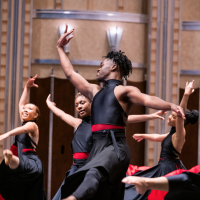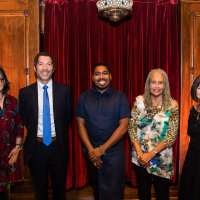I attended the Cuyahoga Arts & Culture (CAC) board meeting this week (why does no one from the arts community except a representative from our commercial classical radio station ever show up to these open, public meetings?) and suddenly was caught by thoughts of how much has changed in our arts community in the past decade. Most of it for the better.
Ten years ago we had no organized advocate and public policy agent for the arts. Now we have the well-established Community Partnership for Arts and Culture (CPAC) with a robust mission of research, policy, and capacity-building for the arts sector.
Ten years ago, no one in Cleveland could even imagine dedicated, tax-based local support for the arts – all the arts, not just the big guys. Artists, too. Today, the resources from the cigarette tax, administered by CAC have made Cleveland/Cuyahoga County one of the nation’s top five sources of local government support for the arts and, along with the services and opportunities provided by CPAC, one of the most artist-friendly cities in the country.
Ten years ago Great Lakes Theater Festival was contemplating closing its doors: in debt, without any street presence, performing in a space twice the size and cost of other classic theaters in the nation. Today it has completed a successful capital and endowment campaign, balanced its budget for eight years in a row and performs in one of the most visible, innovative and audience-friendly ‘rooms’ for theater in the country.
Ten years ago the Cleveland Orchestra steadfastly clung to its elite persona, touting its ‘world class’ status while ignoring the fact that it lived in a shrinking city with an aging audience base. Today, while still facing financial challenges, the organization has also begun to face the need to change its culture and embrace new ways of serving the community and a future audience that will look nothing like the patrons of the past.
Ten years ago Playhouse Square was banking on the potential of the Allen Theater to host long-running Broadway shows, attracting tourists and generating the revenues to support the local resident performing arts companies in PHS’s large and expensive theaters. No sooner was the renovation done than the business model for touring shows changed. Today, no one can book a Broadway show for more than a few weeks.
But the expensively renovated Allen has become the focal point for growth opportunities for both Cleveland StateUniversity’s drama department and the Cleveland Play House, which itself has seen incredible change in the past 10 years. CPH has evolved from a venerable but dowdy institution in serious threat of extinction by virtue of its own version of elitist separatism, to an energized, collaborative and forward-thinking organization, which sees its future as part of the city’s robust theater district – not separate from it. Hurrah!
A Film Festival that clawed its way back from the brink to become one of the best in the country according to Time Magazine, and which surprises itself each year by exceeding its own ambitious expectations – despite blizzards and global economic crises. But we have seen losses in the past 10 years too. Two ballet companies. Two chamber orchestras. One opera company. One science/health museum. To name the most visible.
Still, from my vantage point – and despite the Great Recession, which will continue to present challenges for all sectors in the years to come, I have to say that Cleveland’s cultural sector is in a better place today than it was a decade ago. Those challenges will be financial, of course, but perhaps more important and difficult to surmount will be the challenges of serving an increasingly and differently diverse consumer base for culture than in the past, as I have said here and elsewhere before.
It will be interesting, 10 years from now, to look back and see what our cultural community looks like. I plan to be living in a condo downtown and walking to the theater by then. And maybe hopping the light rail out Euclid to the museums and the Orchestra (one can dream).
*BTW, I claim to make the best ‘classic’ Madeleines this side of Paris.

